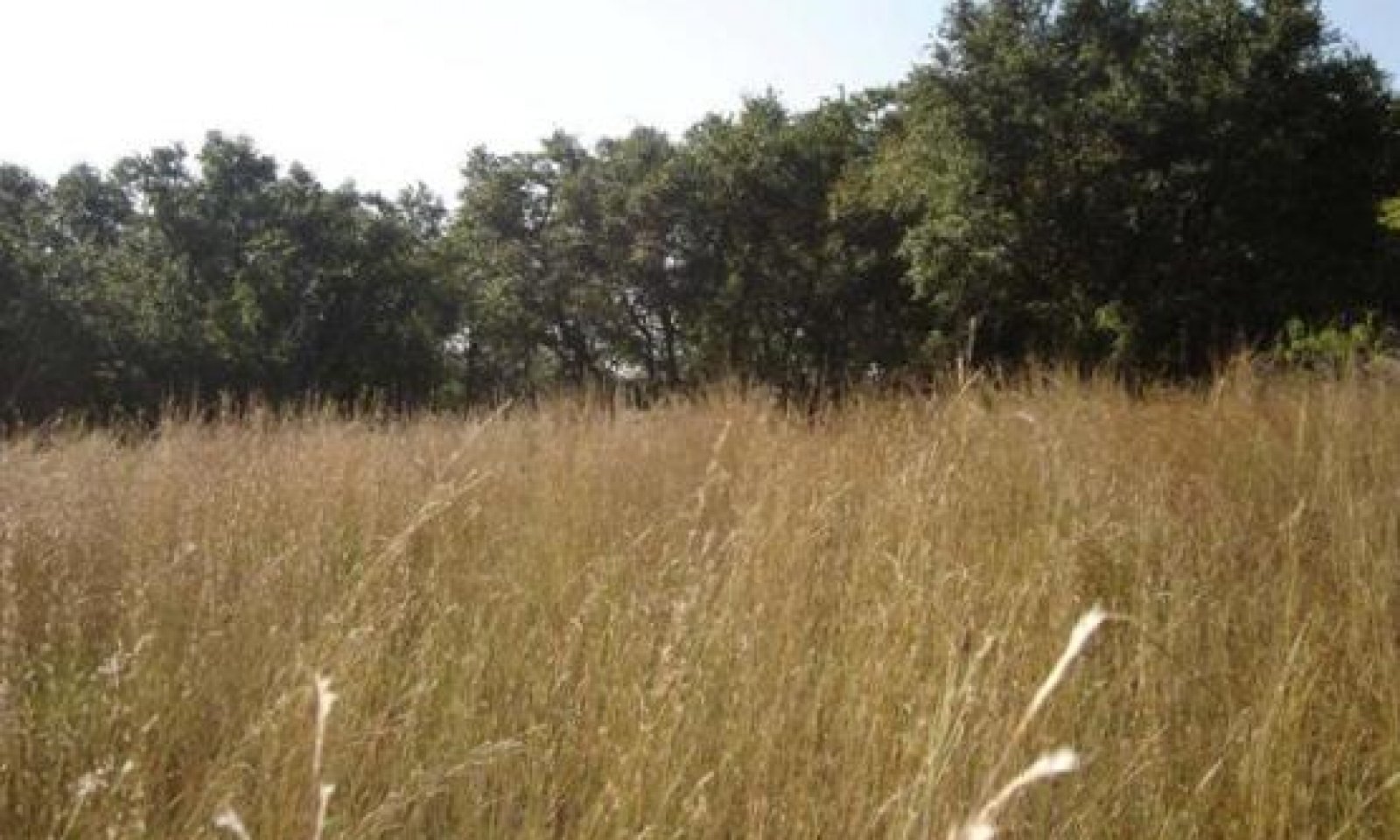

Natural Resources
Conservation Service
Ecological site R080BY156TX
Rocky Hill 26-33" PZ
Last updated: 9/19/2023
Accessed: 12/19/2025
General information
Provisional. A provisional ecological site description has undergone quality control and quality assurance review. It contains a working state and transition model and enough information to identify the ecological site.
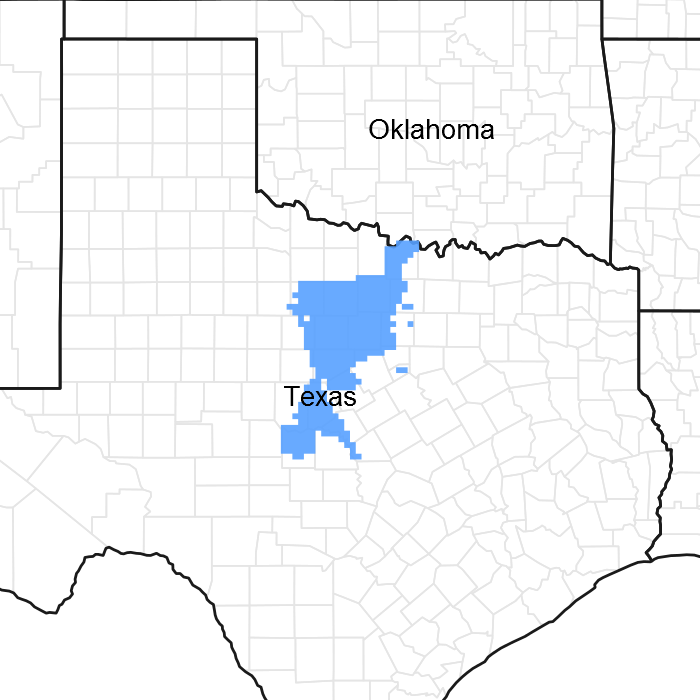
Figure 1. Mapped extent
Areas shown in blue indicate the maximum mapped extent of this ecological site. Other ecological sites likely occur within the highlighted areas. It is also possible for this ecological site to occur outside of highlighted areas if detailed soil survey has not been completed or recently updated.
MLRA notes
Major Land Resource Area (MLRA): 080B–Texas North-Central Prairies
MLRA 80B consists of gently rolling, dissected plains with very steep hillsides and sideslopes and narrow flood plains associated with small streams. Loamy and clayey soils range from very shallow to deep and developed in sandstones, shales, and limestones of Pennsylvanian age.
Classification relationships
This ecological site is correlated to soil components at the Major Land Resource Area (MLRA) level which is further described in USDA Ag Handbook 296.
Ecological site concept
The site is characterized by extremely bouldery to rubbly, shallow to moderately deep, well drained clayey soils on uplands. The reference vegetation includes tall and midgrasses with a variety of forbs and scattered shrubs and trees. Without periodic fires or brush management, woody species may increase and dominate the site.
Associated sites
| R080BY161TX |
Shallow Clay 26-33" PZ Shallow Clay has less slope and occurs downslope of the Rocky Hill site. |
|---|
Similar sites
| R080BY163TX |
Steep Rocky 26-33" PZ Similar slopes and boulders, less clay content. |
|---|
Table 1. Dominant plant species
| Tree |
(1) Quercus stellata |
|---|---|
| Shrub |
(1) Rhus |
| Herbaceous |
(1) Schizachyrium scoparium |
Physiographic features
This site occurs on linear to convex nose slopes and side slopes of scarp slopes and ridges in the Texas North-Central Prairies. This site is characteristically a water distributing site. Slopes are typically between 20 to 40 percent.
Table 2. Representative physiographic features
| Landforms |
(1)
Hills
> Ridge
(2) Hills > Scarp slope |
|---|---|
| Runoff class | Very high |
| Elevation | 750 – 2,400 ft |
| Slope | 20 – 40% |
| Aspect | Aspect is not a significant factor |
Table 3. Representative physiographic features (actual ranges)
| Runoff class | Not specified |
|---|---|
| Elevation | Not specified |
| Slope | 5 – 45% |
Climatic features
The climate is subtropical subhumid and is characterized by hot humid summers and relatively mild winters. Tropical maritime air controls the climate during spring, summer and fall. In winter and early spring, frequent surges of polar Canadian air cause sudden drops in temperatures and add considerable variety to the daily weather. The average first frost generally occurs about November 5 and the last freeze of the season usually occurs about March 19. The average frost free period ranges from 215 days in the northern counties, to 240 days in the south.
The average relative humidity in mid-afternoon is about 60 percent in the summer months. Humidity is higher at night, and the average at dawn is about 80 percent. The sun shines 75 percent of the time possible during the summer and 50 percent in winter. The prevailing wind direction is from the southwest and highest windspeeds occur during the spring months.
Approximately 75% of annual rainfall occurs between April 1 and October 31. Rainfall during the months of April through September typically occurs during thunderstorms which tend to be intense and brief, resulting in large amounts of rain in a short time. The wettest months of the year are May, June, September, and October. The driest months during the growing season are July and August. The winter months of November, December, January, and February are the driest months overall.
Average annual precipitation for the entire MLRA is approximately 28 inches. There is a noticeable difference in the average annual precipitation in the northern counties in comparison to the southern and western counties of this Major Land Resource Area. Jack, Clay, Young, and Palo Pinto Counties all have an average annual precipitation of more than 31 inches. Stephens, Eastland, McCulloch, and San Saba Counties all have an average annual precipitation of less than 28 inches.
Winters tend to be mild, with occasional periods of very cold temperatures which can be accompanied by strong northerly winds and freezing precipitation. Snow is infrequent and significant accumulations are rare. These periods of very cold weather are generally short-lived. Summers tend to be hot and dry. Drought conditions are common during most summers. Air temperatures of more than 95oF are common from mid-June through September. In the northern counties nearest to the Red River, temperatures are generally slightly cooler during winter months and slightly warmer during summer months than in the other counties in the North Central Prairie.
Table 4. Representative climatic features
| Frost-free period (characteristic range) | 184-200 days |
|---|---|
| Freeze-free period (characteristic range) | 211-225 days |
| Precipitation total (characteristic range) | 30-32 in |
| Frost-free period (actual range) | 183-204 days |
| Freeze-free period (actual range) | 210-226 days |
| Precipitation total (actual range) | 29-33 in |
| Frost-free period (average) | 193 days |
| Freeze-free period (average) | 217 days |
| Precipitation total (average) | 31 in |
Figure 2. Monthly precipitation range
Figure 3. Monthly minimum temperature range
Figure 4. Monthly maximum temperature range
Figure 5. Monthly average minimum and maximum temperature
Figure 6. Annual precipitation pattern
Figure 7. Annual average temperature pattern
Climate stations used
-
(1) SAN SABA 7NW [USC00417994], Richland Springs, TX
-
(2) BROWNWOOD 2ENE [USC00411138], Early, TX
-
(3) EASTLAND [USC00412715], Eastland, TX
-
(4) MINERAL WELLS AP [USW00093985], Millsap, TX
-
(5) BRECKENRIDGE [USC00411042], Breckenridge, TX
-
(6) GRAHAM [USC00413668], Graham, TX
-
(7) JACKSBORO [USC00414517], Jacksboro, TX
Influencing water features
These sites shed some water via runoff to adjacent sites downslope. However, the presence of good ground cover and deep rooted grasses can help facilitate water infiltration into the soil. These sites are not associated with wetlands.
Wetland description
NA
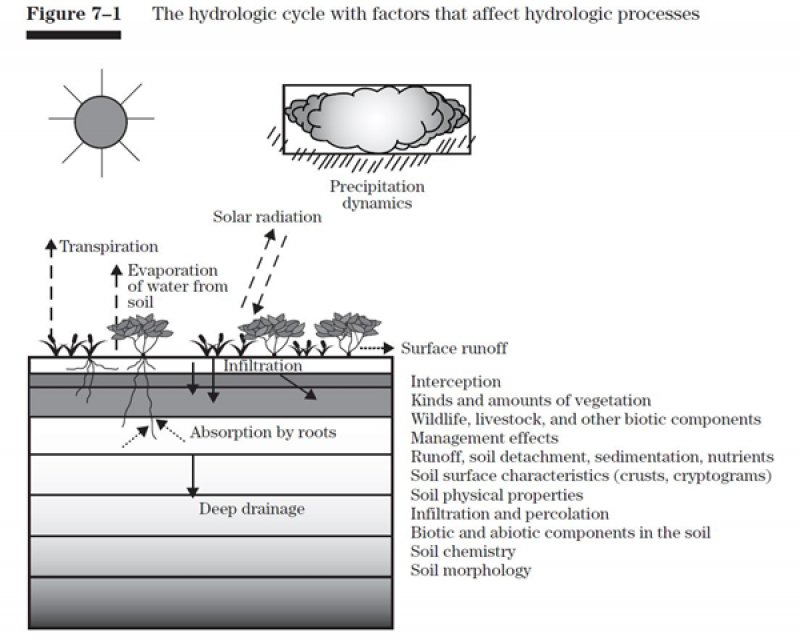
Figure 8.
Soil features
Representative soil components for this ecological site include: Owens, Harpersville
The site is characterized by extremely bouldery to rubbly, shallow to moderately deep, well drained clayey soils.
Table 5. Representative soil features
| Parent material |
(1)
Residuum
–
claystone
|
|---|---|
| Surface texture |
(1) Stony clay (2) Clay |
| Drainage class | Well drained |
| Permeability class | Very slow |
| Soil depth | 3 – 30 in |
| Surface fragment cover <=3" | 5% |
| Surface fragment cover >3" | 5 – 50% |
| Available water capacity (0-40in) |
2 – 4 in |
| Calcium carbonate equivalent (0-40in) |
2 – 15% |
| Electrical conductivity (0-40in) |
4 mmhos/cm |
| Sodium adsorption ratio (0-40in) |
10 |
| Soil reaction (1:1 water) (0-40in) |
7.4 – 8.4 |
| Subsurface fragment volume <=3" (Depth not specified) |
12% |
| Subsurface fragment volume >3" (Depth not specified) |
10% |
Ecological dynamics
The reference plant community for the Rocky Hill ecological site is a mixed tallgrass and midgrass community with a significant population of shrubs and trees. Evidence of the historic vegetation can be found in the journals and records of explorers, military expeditions, and boundary survey teams.
Climate is a major factor influencing vegetation on the site. Long-term droughts lasting multiple years or growing seasons are infrequent, but when they do occur, they can have a negative impact on the vegetation. If abusive grazing occurs during or immediately following the drought period, the results can be devastating. The effects of erratic seasonal moisture and short-term dry spells lasting a few months are not as severe as those caused by long-term droughts. However, the lower the ecological status of the site, the greater the negative impact will be during drought periods regardless of duration.
Fire was an important part of the ecosystem. Most ecosystems in the North Central Prairie developed in a 4 to 6 year regime of recurring fires. This site, like other steep, shallow sites probably had a longer recurring fire cycle of 7 to 12 years according to some historians. Many of these fires resulted from lightning strikes during thunderstorms. Native Americans frequently set fires to manipulate the movement of bison and other animals as well as a defensive or offensive technique when dealing with their enemies. These historic fires were usually severe because of the amount and volatility of fuel available to carry the fire. The intensity of fires kept shrubs and sapling trees suppressed and allowed grasses and forbs to flourish. Tallgrass species are fire tolerant and are enhanced by periodic burning. Forbs usually increase for a year or two following these types of fires before the grasses become dominant again.
Lack of fire allows herbaceous vegetation to become senescent and may eventually lead to the loss of the most desirable species. Seedlings of non-native brush species and invasive weeds may encroach on the site from adjacent sites
Prior to settlement, this site was subject to periodic grazing and browsing by vast herds of bison, wild cattle, wild horses, and deer. Because of the steep, rugged terrain, the Rocky Hill site was probably not grazed as frequently or as severely as other sites in the vicinity. However, at times the site was grazed heavily in conjunction with adjacent sites. These grazing and browsing episodes were intense and severe, but periods of heavy use were followed by long periods of non-use as the herds migrated to fresh grazing areas before returning to previously grazed areas. The grazed areas had an opportunity to rest, regrow, regain vigor, and reproduce prior to the next grazing event. Intervals between grazing periods were frequently influenced by the amount of time that had elapsed since the last fire on the area.
As the region was settled, fire was reduced or eliminated and grasslands were fenced off to control movement and facilitate grazing by domestic livestock. As a result of abusive grazing or lack of grazing and/or the elimination of fire, in association with extreme climatic events, the tallgrass plant community has been eliminated or severely reduced on most Rocky Hill sites.
Further deterioration leads to the loss of the perennial warm-season midgrass and forb plant community and an increase in shortgrasses, annuals, and bare ground. This provides the opportunity for less desirable woody species such as mesquite (Prosopis glandulosa) and juniper (Juniperus spp.) to encroach from adjacent sites.
Selective individual removal of undesirable trees and shrubs is relatively easy and more practical when brush plants initially appear on the site. The increase of brush can be fairly rapid and the plants per acre will soon become too numerous for individual control to be feasible. Once woody plants become mature or develop into dense stands, control is expensive, uneconomical, impractical, and difficult to achieve. Brush management is most successful using a systems approach. Initial treatment by mechanical methods can be followed by using approved herbicides, and using prescribed fire as a maintenance technique. Prescribed grazing with a reasonable stocking rate can sustain the grass species composition and production at a near reference community level.
Changes in plant communities and vegetation states on the Rocky Hill 26-33” PZ ecological site are result of the combined influences of natural events (rainfall, temperature, droughts, etc.) and the accompanying management systems implemented on the area (prescribed fire, grazing management, and brush management).
Rangeland Health Reference Worksheets have been posted for this site on the Texas NRCS website (www.tx.nrcs.usda.gov) in Section II of the eFOTG under (F) Ecological Site Descriptions.
State and Transitional Pathways:
The State and Transition Diagram which follows provides information on some of the most typical pathways that the vegetation on this site can follow as the result of natural events, management inputs, and application of conservation treatments. There may be other plant communities that can exist on this site under certain conditions. Consultation with local experts and professionals is recommended prior to application of practices or management strategies in order to ensure that specific objectives will be met.
State and transition model
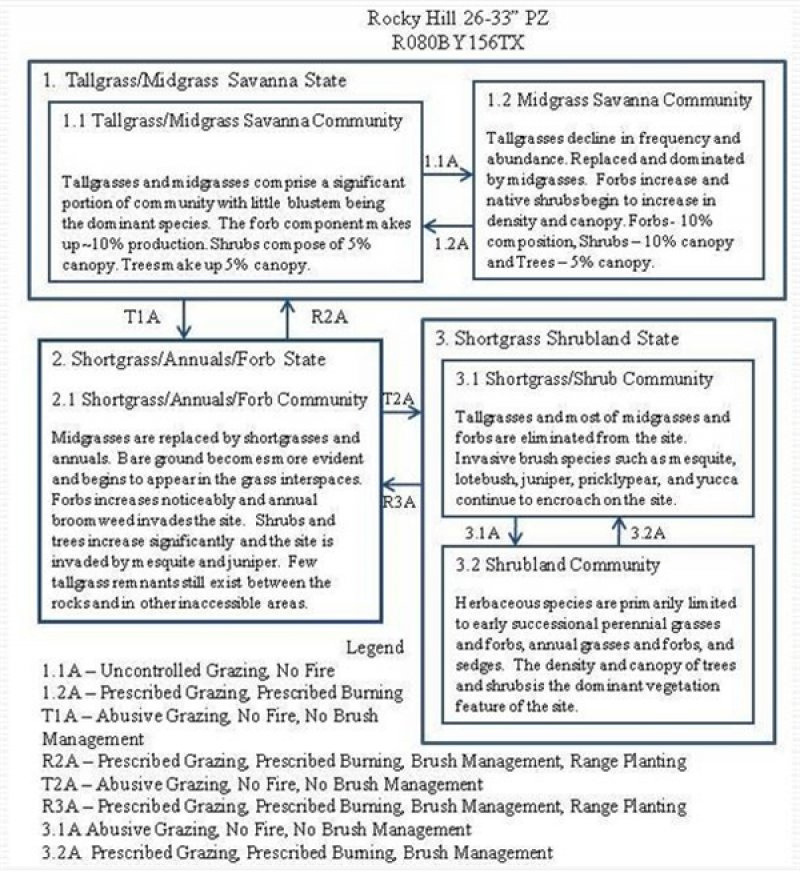
More interactive model formats are also available.
View Interactive Models
More interactive model formats are also available.
View Interactive Models
Click on state and transition labels to scroll to the respective text
State 1 submodel, plant communities
State 2 submodel, plant communities
State 3 submodel, plant communities
State 1
Tallgrass/Midgrass Savanna State - Reference
The reference plant community for the Rocky Hill ecological site is a mixed tallgrass and midgrass community with a significant population of shrubs and trees. In reference conditions, the site is dominated by little bluestem with big bluestem and Indiangrass as major components of the herbaceous plant community. Forbs, trees and shrubs are an important part of the plant community as well. Annual production for this plant community ranges from 2100 to 3600 pounds per acre. The Midgrass Savanna Community is noted for the shift from a tallgrass dominant plant community to a midgrass dominant community. As little bluestem, big bluestem, and Indiangrass begin to decline, they are replaced by sideoats grama, dropseeds, cane and silver bluestem, Texas wintergrass, and other midgrasses. Lower successional forbs begin to replace some of the original perennial forbs. Large rocks and boulders are obvious, but bare ground is minimal. Density and canopy of shrubby species such as lotebush, bumelia, sumacs, pricklypear and yucca begins to increase. Juniper and mesquite begin to encroach from adjacent sites. Annual production ranges from 1650 to 2800 pounds per acre.
Dominant plant species
-
post oak (Quercus stellata), tree
-
sumac (Rhus), shrub
-
little bluestem (Schizachyrium scoparium), grass
Community 1.1
Tallgrass/Midgrass Savanna Community

Figure 9. 1.1 Tallgrass/Midgrass Savanna Community
The reference plant for the Rocky Hill ecological site is a mixed tallgrass and midgrass community with a significant population of shrubs and trees. In pristine conditions, the site is dominated by little bluestem (Schizachyrium scoparium) with big bluestem (Andropogon gerardii) and Indiangrass (Sorghastrum nutans) as major components of the herbaceous plant community. Switchgrass (Panicum virgatum) and Canada wildrye (Elymus canadensis) occur infrequently. Sideoats grama (Bouteloua curtipendula) is the predominant midgrass species. Other midgrasses include Texas wintergrass (Nassella leucotricha), tall (Sporobolus compositus var. compositus) and meadow dropseed (Sporobolus compositus var. drummondii), silver (Bothriochloa laguroides) and cane bluestem (Bothriochloa barbinodis), Texas cupgrass (Eriochloa sericea), vine mesquite (Panicum obtusum), and bristlegrass (Setaria spp.). Other midgrasses and shortgrasses found on this site are hairy grama (Bouteloua hirsuta), buffalograss (Bouteloua dactyloides), curlymesquite (Hilaria belangeri), slim (Tridens muticus) and rough tridens (Tridens muticus var. elongatus), white tridens (Tridens albescens), sedges (Carex spp.), and threeawns (Aristida spp.). The most common forbs are Maximilian sunflower (Helianthus maximiliani), Engelmann daisy (Engelmannia peristenia), heath aster (Chaetopappa ericoides), sagewort (Artemisia spp.), gaura (Gaura spp.) , verbena (Verbena spp.), catclaw sensitivebriar (Mimosa nuttallii), yellow neptunia (Neptunia lutea), halfshrub sundrop (Calyophus serrulatus), prairie clover (Dalea spp.), bundleflower (Desmanthus spp.), trailing ratany (Krameria lanceolata), skullcap (Scutellaria spp.), daleas (Dalea spp.), gayfeather (Liatris punctata), basketflower (Centaurea americana), western ragweed (Ambrosia psilostachya), wild buckwheat (Eriogonum spp.), eryngo (Eryngium spp.), plains blackfoot (Melapodium leucanthum), plains tetraneuris (Tetraneuris spp.), and gray goldaster (Heterotheca canescens). Trees and shrubs are an important part of the plant community as well. The most common trees include post oak (Quercus stellata), live oak (Quercus virginiana), elm (Ulmus spp.), hackberry (Celtis spp.), ash (Fraxinus spp.), and Texas oak (Quercus texana). Shrubs such as flameleaf sumac (Rhus lanceolata), skunkbush sumac (Rhus aromatica), bumelia (Sideroxylon spp.), elbowbush (Forestiera pubescens), lotebush (Ziziphus obtusifolia), catclaw acacia (Acacia greggii), pricklyash (Zanthoxylum spp.), yucca (Yucca spp.), and pricklypear (Opuntia spp.) are found on the site as well. Annual production for this plant community ranges from 2100 to 3600 pounds per acre.
Figure 10. Annual production by plant type (representative values) or group (midpoint values)
Table 6. Annual production by plant type
| Plant type | Low (lb/acre) |
Representative value (lb/acre) |
High (lb/acre) |
|---|---|---|---|
| Grass/Grasslike | 1450 | 2150 | 3000 |
| Forb | 300 | 350 | 400 |
| Shrub/Vine | 200 | 150 | 100 |
| Tree | 150 | 150 | 100 |
| Total | 2100 | 2800 | 3600 |
Figure 11. Plant community growth curve (percent production by month). TX3014, Tall and mid-grass Savannah, 10 % canopy. Tall and mid grass savannah with some forbs and woody species..
| Jan | Feb | Mar | Apr | May | Jun | Jul | Aug | Sep | Oct | Nov | Dec |
|---|---|---|---|---|---|---|---|---|---|---|---|
| J | F | M | A | M | J | J | A | S | O | N | D |
| 2 | 2 | 2 | 10 | 20 | 24 | 10 | 5 | 10 | 10 | 3 | 2 |
Community 1.2
Midgrass Savanna Community
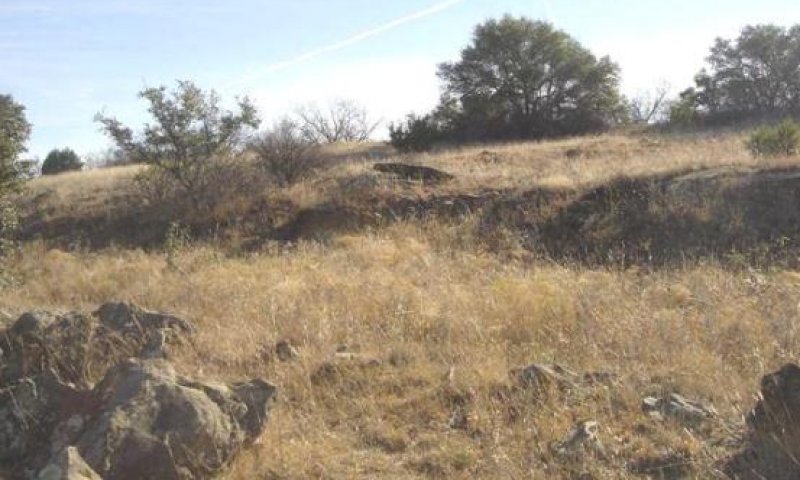
Figure 12. 1.2 Midgrass Savanna Community
A number of temporary and often reversible factors can cause plant community 1.1 to shift from a tallgrass dominant plant community to a midgrass dominant community. The shallow, droughty, and steep nature of the soils and topography can accelerate the change if uncontrolled grazing, lack of fire, and/or extended unfavorable climatic conditions exist. These events, by themselves or in combination, eventually cause the plant community to change from a tallgrass dominant to a midgrass dominant. As little bluestem, big bluestem, and Indiangrass begin to decline, they are replaced by sideoats grama, dropseeds, cane and silver bluestem, Texas wintergrass, and other midgrasses. Lower successional forbs begin to replace some of the original perennial forbs. Large rocks and boulders are obvious, but bare ground is minimal. Density and canopy of shrubby species such as lotebush, bumelia, sumacs, pricklypear and yucca begins to increase. Juniper and mesquite begin to encroach from adjacent sites. There is still a sufficient population of little bluestem and tallgrasses remaining to enable this site to recover to near its historic potential through proper grazing management and prescribed burning. Annual production ranges from 1650 to 2800 pounds per acre.
Figure 13. Annual production by plant type (representative values) or group (midpoint values)
Table 7. Annual production by plant type
| Plant type | Low (lb/acre) |
Representative value (lb/acre) |
High (lb/acre) |
|---|---|---|---|
| Grass/Grasslike | 1000 | 1600 | 2200 |
| Forb | 200 | 250 | 300 |
| Shrub/Vine | 250 | 200 | 150 |
| Tree | 200 | 150 | 150 |
| Total | 1650 | 2200 | 2800 |
Figure 14. Plant community growth curve (percent production by month). TX3020, Midgrass Savannah, 10% canopy. Midgrass savannah with 10 percent canopy cover. Continuous overgrazing led to the decline of tall grasses and the rise of the midgrass species..
| Jan | Feb | Mar | Apr | May | Jun | Jul | Aug | Sep | Oct | Nov | Dec |
|---|---|---|---|---|---|---|---|---|---|---|---|
| J | F | M | A | M | J | J | A | S | O | N | D |
| 2 | 2 | 2 | 10 | 20 | 24 | 10 | 5 | 10 | 10 | 3 | 2 |
Pathway 1.1A
Community 1.1 to 1.2


With uncontrolled and abusive grazing pressure and no fires, the Tallgrass/Midgrass Savanna Community will shift to the Midgrass Savanna Community.
Pathway 1.2A
Community 1.2 to 1.1


With Prescribed Grazing and Prescribed Burning conservation practices, the Midgrass Savanna Community can be shifted back to the Tallgrass/Midgrass Savanna Community.
Conservation practices
| Prescribed Burning | |
|---|---|
| Prescribed Grazing |
State 2
Shortgrass/Annuals/Forbs State
The Shortgrass/Annuals/Forb Community marks the transition from a tallgrass plant community to a plant community that is dominated by shortgrasses, lower successional perennial grasses and forbs, and annual species. Midgrasses are replaced by shortgrasses such as buffalograss, curlymesquite, Texas grama, and hairy tridens. Bare ground becomes more evident and begins to appear in the interspaces between the individual grass plants. Pricklypear, yucca, catclaw acacia, and sumacs increase significantly and the site is invaded by mesquite and juniper. Annual production ranges from 1150 to 1900 pounds per acre.
Dominant plant species
-
Ashe's juniper (Juniperus ashei), tree
-
post oak (Quercus stellata), tree
-
sumac (Rhus), shrub
-
buffalograss (Bouteloua dactyloides), grass
Community 2.1
Shortgrass/Annuals/Forb Community
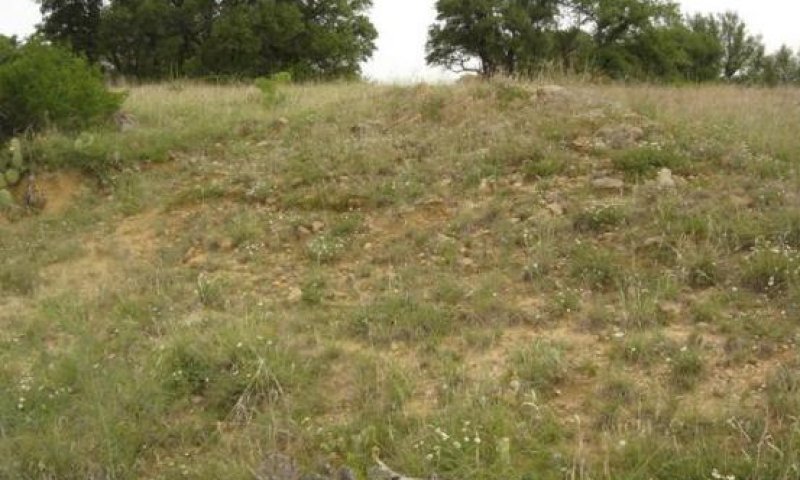
Figure 15. 2.1 Shortgrass/Annuals/Forb Community
Abusive grazing, extended severe drought conditions, and lack of fire will eventually lead to a drastic transition from a tallgrass plant community to a plant community that is dominated by shortgrasses, lower successional perennial grasses and forbs, and annual species. Midgrasses are replaced by buffalograss, curlymesquite, Texas grama (Bouteloua rigidiseta), red grama (Bouteloua trifida), hairy tridens (Erioneuron pilosum), threeawns, and annuals. Bare ground becomes more evident and begins to appear in the interspaces between the individual grass plants. This makes the site more susceptible to the invasion of undesirable brush and weed species from adjacent sites. Western ragweed increases noticeably and annual broomweed invades the site. Pricklypear, yucca, catclaw acacia, and sumacs increase significantly and the site is invaded by mesquite and juniper. Due to the amount of rock on the soil surface, a few tallgrasses still exist between the rocks and in other inaccessible areas. Because of the amount of tree and shrub canopy, and an insufficient seed source of higher successional grasses, this plant community cannot return to the reference plant community through implementation of management practices alone.
Figure 16. Annual production by plant type (representative values) or group (midpoint values)
Table 8. Annual production by plant type
| Plant type | Low (lb/acre) |
Representative value (lb/acre) |
High (lb/acre) |
|---|---|---|---|
| Grass/Grasslike | 550 | 900 | 1250 |
| Shrub/Vine | 300 | 250 | 250 |
| Tree | 200 | 200 | 200 |
| Forb | 100 | 150 | 200 |
| Total | 1150 | 1500 | 1900 |
Figure 17. Plant community growth curve (percent production by month). TX3039, Shortgrass/Annuals/Mesquite/Shrubs Community. Shortgrass/Annuals/Mesquite and Shrubs – buffalograss, curlymesquite, broomweed, annual forbs and grasses, mesquite, lotebush.
| Jan | Feb | Mar | Apr | May | Jun | Jul | Aug | Sep | Oct | Nov | Dec |
|---|---|---|---|---|---|---|---|---|---|---|---|
| J | F | M | A | M | J | J | A | S | O | N | D |
| 3 | 4 | 8 | 16 | 18 | 12 | 4 | 4 | 10 | 12 | 6 | 3 |
State 3
Shortgrass Shrubland State
The Shortgrass/Shrub Community is noted for tallgrasses, midgrasses, and perennial forbs continue to decline as opportunistic species that are more grazing and drought tolerant, take their place. The tree and shrub canopy continues to increase. Annual production ranges from 750 to 1300 pounds per acre. The Shrubland Community consists of herbaceous species that are primarily limited to early successional perennial grasses and forbs, annual grasses and forbs, and sedges. The density and canopy of trees and shrubs is the dominant vegetation feature of the site. Sparse herbaceous vegetation is scattered among the rocks on the soil surface. Annual production ranges from 700 to 1100 pounds per acre.
Dominant plant species
-
post oak (Quercus stellata), tree
-
Ashe's juniper (Juniperus ashei), tree
-
sumac (Rhus), shrub
-
sideoats grama (Bouteloua curtipendula), grass
Community 3.1
Shortgrass/Shrubs Community
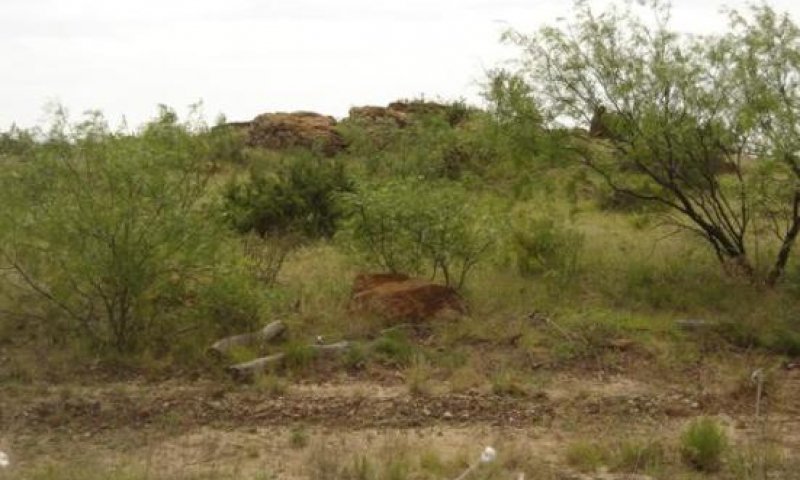
Figure 18. 3.1 Shortgrass/Shrubs Community
As the site continues to deteriorate because of mismanagement and/or extreme climatic conditions, tallgrasses, midgrasses, and perennial forbs continue to decline as opportunistic species that are more grazing and drought tolerant, take their place. The tree and shrub canopy continues to increase. Bare ground becomes more apparent, and soil erosion becomes a potential hazard. Annual production ranges from 750 to 1300 pounds per acre.
Figure 19. Annual production by plant type (representative values) or group (midpoint values)
Table 9. Annual production by plant type
| Plant type | Low (lb/acre) |
Representative value (lb/acre) |
High (lb/acre) |
|---|---|---|---|
| Grass/Grasslike | 100 | 400 | 700 |
| Shrub/Vine | 350 | 300 | 300 |
| Tree | 200 | 200 | 200 |
| Forb | 100 | 100 | 100 |
| Total | 750 | 1000 | 1300 |
Figure 20. Plant community growth curve (percent production by month). TX3039, Shortgrass/Annuals/Mesquite/Shrubs Community. Shortgrass/Annuals/Mesquite and Shrubs – buffalograss, curlymesquite, broomweed, annual forbs and grasses, mesquite, lotebush.
| Jan | Feb | Mar | Apr | May | Jun | Jul | Aug | Sep | Oct | Nov | Dec |
|---|---|---|---|---|---|---|---|---|---|---|---|
| J | F | M | A | M | J | J | A | S | O | N | D |
| 3 | 4 | 8 | 16 | 18 | 12 | 4 | 4 | 10 | 12 | 6 | 3 |
Community 3.2
Shrubland Community
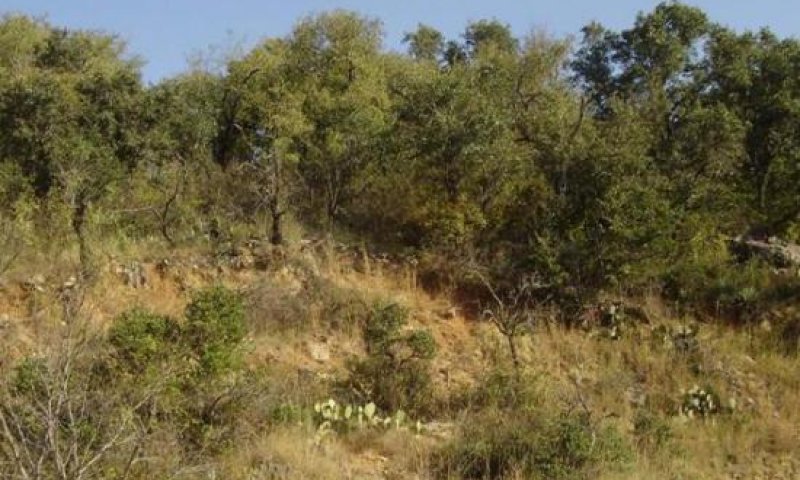
Figure 21. 3.2 Shrubland Community
Herbaceous species are primarily limited to early successional perennial grasses and forbs, annual grasses and forbs, and sedges. The density and canopy of trees and shrubs is the dominant vegetation feature of the site. Sparse herbaceous vegetation is scattered among the rocks on the soil surface. Soil erosion potential is increased because of the amount of bare ground, especially on steeper slopes. Once the site has deteriorated to this point, it is not practical to implement brush management or range seeding on a large scale. However, targeted areas can be treated to enhance wildlife habitat. Annual production ranges from 700 to 1100 pounds per acre.
Figure 22. Annual production by plant type (representative values) or group (midpoint values)
Table 10. Annual production by plant type
| Plant type | Low (lb/acre) |
Representative value (lb/acre) |
High (lb/acre) |
|---|---|---|---|
| Forb | 100 | 200 | 300 |
| Grass/Grasslike | 100 | 200 | 300 |
| Shrub/Vine | 300 | 300 | 300 |
| Tree | 200 | 200 | 200 |
| Total | 700 | 900 | 1100 |
Figure 23. Plant community growth curve (percent production by month). TX3051, Shrubland Community. Shrub dominant (over 35% woody canopy) with warm-season shortgrasses, annual forbs and grasses..
| Jan | Feb | Mar | Apr | May | Jun | Jul | Aug | Sep | Oct | Nov | Dec |
|---|---|---|---|---|---|---|---|---|---|---|---|
| J | F | M | A | M | J | J | A | S | O | N | D |
| 3 | 4 | 6 | 15 | 18 | 16 | 4 | 5 | 11 | 10 | 5 | 3 |
Pathway 3.1A
Community 3.1 to 3.2


With abusive grazing pressure, no fires, and no brush management, the Shortgrass/Shrub Community will shift to the Shrubland Community.
Pathway 3.2A
Community 3.2 to 3.1


With the implementation of various conservation practices such as Prescribed Grazing, Prescribed Burning, and Brush Management, the Shrubland Community may be able to be restored to the Shortgrass/Shrub Community.
Conservation practices
| Brush Management | |
|---|---|
| Prescribed Burning | |
| Prescribed Grazing | |
| Range Planting |
Transition T1A
State 1 to 2
With the continuation of abusive grazing pressure, no fires, and no brush management practices, the Tallgrass/Midgrass Savanna State will transition into the Shortgrass/Annuals/Forb State.
Restoration pathway R2A
State 2 to 1
The Shortgrass/Annuals/Forb State can be restored to the Tallgrass/Midgrass Savanna State by the use of various conservation practices including Prescribed Grazing, Prescribed Burning, Brush Management and Range Planting.
Conservation practices
| Brush Management | |
|---|---|
| Prescribed Burning | |
| Prescribed Grazing | |
| Range Planting |
Transition T2A
State 2 to 3
With continued abusive grazing, no fires, and no brush management, the Shortgrass/Annuals/Forb State will transition into the Shortgrass Shrubland State.
Restoration pathway R3A
State 3 to 2
The Shortgrass Shrubland State can be restored to the Shortgrass/Annuals/Forb State by the use of conservation practices such as Prescribed Grazing, Prescribed Burning, Brush Management, and Range Planting.
Conservation practices
| Brush Management | |
|---|---|
| Prescribed Burning | |
| Prescribed Grazing | |
| Range Planting |
Additional community tables
Table 11. Community 1.1 plant community composition
| Group | Common name | Symbol | Scientific name | Annual production (lb/acre) | Foliar cover (%) | |
|---|---|---|---|---|---|---|
|
Grass/Grasslike
|
||||||
| 1 | Tallgrass | 350–1250 | ||||
| little bluestem | SCSC | Schizachyrium scoparium | 350–1250 | – | ||
| 2 | Tallgrasses | 350–700 | ||||
| big bluestem | ANGE | Andropogon gerardii | 100–700 | – | ||
| Indiangrass | SONU2 | Sorghastrum nutans | 350–700 | – | ||
| Canada wildrye | ELCA4 | Elymus canadensis | 0–200 | – | ||
| Virginia wildrye | ELVI3 | Elymus virginicus | 0–200 | – | ||
| switchgrass | PAVI2 | Panicum virgatum | 0–200 | – | ||
| 3 | Midgrasses | 350–650 | ||||
| sideoats grama | BOCU | Bouteloua curtipendula | 150–500 | – | ||
| silver beardgrass | BOLAT | Bothriochloa laguroides ssp. torreyana | 50–350 | – | ||
| cane bluestem | BOBA3 | Bothriochloa barbinodis | 0–350 | – | ||
| Texas wintergrass | NALE3 | Nassella leucotricha | 50–350 | – | ||
| vine mesquite | PAOB | Panicum obtusum | 0–300 | – | ||
| Reverchon's bristlegrass | SERE3 | Setaria reverchonii | 0–200 | – | ||
| composite dropseed | SPCOC2 | Sporobolus compositus var. compositus | 0–200 | – | ||
| Drummond's dropseed | SPCOD3 | Sporobolus compositus var. drummondii | 0–200 | – | ||
| Texas cupgrass | ERSE5 | Eriochloa sericea | 0–200 | – | ||
| 4 | Mid/Shortgrasses | 100–200 | ||||
| buffalograss | BODA2 | Bouteloua dactyloides | 0–200 | – | ||
| blue grama | BOGR2 | Bouteloua gracilis | 0–200 | – | ||
| hairy grama | BOHI2 | Bouteloua hirsuta | 0–200 | – | ||
| curly-mesquite | HIBE | Hilaria belangeri | 0–200 | – | ||
| tumblegrass | SCPA | Schedonnardus paniculatus | 0–100 | – | ||
| white tridens | TRAL2 | Tridens albescens | 0–100 | – | ||
| slim tridens | TRMUE | Tridens muticus var. elongatus | 0–100 | – | ||
| slim tridens | TRMUM | Tridens muticus var. muticus | 0–100 | – | ||
| cedar sedge | CAPL3 | Carex planostachys | 0–100 | – | ||
| tumble windmill grass | CHVE2 | Chloris verticillata | 0–100 | – | ||
| fall witchgrass | DICO6 | Digitaria cognata | 0–100 | – | ||
| hairy woollygrass | ERPI5 | Erioneuron pilosum | 0–100 | – | ||
| tumble lovegrass | ERSE2 | Eragrostis sessilispica | 0–100 | – | ||
| purple threeawn | ARPU9 | Aristida purpurea | 0–100 | – | ||
| Wright's threeawn | ARPUW | Aristida purpurea var. wrightii | 0–100 | – | ||
|
Forb
|
||||||
| 5 | Forbs | 100–350 | ||||
| Texas vervain | VEHA | Verbena halei | 0–200 | – | ||
| awnless bushsunflower | SICA7 | Simsia calva | 0–200 | – | ||
| white heath aster | SYERE | Symphyotrichum ericoides var. ericoides | 0–200 | – | ||
| Cuman ragweed | AMPS | Ambrosia psilostachya | 0–200 | – | ||
| white sagebrush | ARLUM2 | Artemisia ludoviciana ssp. mexicana | 0–200 | – | ||
| American star-thistle | CEAM2 | Centaurea americana | 0–200 | – | ||
| Engelmann's daisy | ENPE4 | Engelmannia peristenia | 0–200 | – | ||
| buckwheat | ERIOG | Eriogonum | 0–200 | – | ||
| Leavenworth's eryngo | ERLE11 | Eryngium leavenworthii | 0–200 | – | ||
| beeblossom | GAURA | Gaura | 0–200 | – | ||
| hoary false goldenaster | HECA8 | Heterotheca canescens | 0–200 | – | ||
| Maximilian sunflower | HEMA2 | Helianthus maximiliani | 0–200 | – | ||
| Texas skeletonplant | LYTE | Lygodesmia texana | 0–100 | – | ||
| Nuttall's sensitive-briar | MINU6 | Mimosa nuttallii | 0–100 | – | ||
| yellow puff | NELU2 | Neptunia lutea | 0–100 | – | ||
| Drummond's skullcap | SCDR2 | Scutellaria drummondii | 0–100 | – | ||
| trailing krameria | KRLA | Krameria lanceolata | 0–100 | – | ||
| partridge pea | CHFA2 | Chamaecrista fasciculata | 0–100 | – | ||
| prairie clover | DALEA | Dalea | 0–100 | – | ||
| purple prairie clover | DAPU5 | Dalea purpurea | 0–100 | – | ||
| Illinois bundleflower | DEIL | Desmanthus illinoensis | 0–100 | – | ||
| Berlandier's sundrops | CABE6 | Calylophus berlandieri | 0–100 | – | ||
| purple poppymallow | CAIN2 | Callirhoe involucrata | 0–100 | – | ||
| stemmy four-nerve daisy | TESC2 | Tetraneuris scaposa | 0–100 | – | ||
| fanpetals | SIDA | Sida | 0–100 | – | ||
| queen's-delight | STSY | Stillingia sylvatica | 0–100 | – | ||
| Texas Indian mallow | ABFR3 | Abutilon fruticosum | 0–100 | – | ||
|
Shrub/Vine
|
||||||
| 6 | Shrubs/Vines | 100–200 | ||||
| catclaw acacia | ACGRG3 | Acacia greggii var. greggii | 0–200 | – | ||
| stretchberry | FOPU2 | Forestiera pubescens | 0–200 | – | ||
| western white honeysuckle | LOAL | Lonicera albiflora | 0–200 | – | ||
| algerita | MATR3 | Mahonia trifoliolata | 0–200 | – | ||
| plum | PRUNU | Prunus | 0–200 | – | ||
| fragrant sumac | RHAR4 | Rhus aromatica | 0–200 | – | ||
| prairie sumac | RHLA3 | Rhus lanceolata | 0–200 | – | ||
| littleleaf sumac | RHMI3 | Rhus microphylla | 0–200 | – | ||
| gum bully | SILA20 | Sideroxylon lanuginosum | 0–200 | – | ||
| Texas Hercules' club | ZAHI2 | Zanthoxylum hirsutum | 0–200 | – | ||
| lotebush | ZIOB | Ziziphus obtusifolia | 0–200 | – | ||
| honey mesquite | PRGL2 | Prosopis glandulosa | 0–100 | – | ||
| greenbrier | SMILA2 | Smilax | 0–50 | – | ||
| yucca | YUCCA | Yucca | 0–50 | – | ||
| pricklypear | OPUNT | Opuntia | 0–50 | – | ||
| Carolina coralbead | COCA | Cocculus carolinus | 0–50 | – | ||
| clapweed | EPAN | Ephedra antisyphilitica | 0–50 | – | ||
|
Tree
|
||||||
| 7 | Trees | 100–250 | ||||
| hackberry | CELTI | Celtis | 0–250 | – | ||
| Texas red oak | QUBU2 | Quercus buckleyi | 0–250 | – | ||
| Texas live oak | QUFU | Quercus fusiformis | 0–250 | – | ||
| post oak | QUST | Quercus stellata | 0–250 | – | ||
| cedar elm | ULCR | Ulmus crassifolia | 0–250 | – | ||
Interpretations
Animal community
Historically, the Rocky Hill site was inhabited permanently and intermittently by a wide variety of mammals, reptiles, and birds. Several historical references and journals written in the 18th and 19th century by explorers, survey parties, and military expeditions refer to herds of bison, wild cattle, wild horses, deer, and antelope roaming freely across the North Central Prairie and adjacent regions.
The Rocky Hill site provides excellent habitat for many species of wildlife due to the rough, steep terrain and the diversity of plant species, growth forms, distribution, and structure of the vegetation that occurs. The site provides shelter, escape cover, and nesting habitat, as well as a variety of browse, mast, seeds, and fruit that are important to the diets of various wildlife species. Currently, the site is utilized by deer, wild turkey, numerous species of birds, and a variety of small fur-bearing mammals. Animal species and populations fluctuate as the vegetation cycles through temporary phases and different ecological
Because of the tree and shrub component and the topography, the Rocky Hill site is well suited for grazing and browsing by goats. Grazing by cattle is usually limited to the lower slopes and benches on this site. Most European breeds of cattle and small statured cattle are not well suited to this site. Some of the hardier breeds of cattle are better suited to the slopes, but are still not well adapted for the steepest terrain and lack of water sources on the site. Livestock grazing and distribution can be improved by providing water sources, providing supplemental feed in strategic locations, and by implementing grazing management systems that incorporate frequent and timely deferment periods.
Hydrological functions
The Rocky Hill site has a good soil-water-air-plant relationship because of the amount of rock on the soil surface and in the upper portions of the soil profile. Showers and light rains can be very effective on this site. Surface rocks retain moisture and release it slowly to the soil and vegetation following showers and light rainfall. Rocks and fragments in the soil provide pockets for oxygen, moisture, and plant roots.
When herbaceous vegetation and ground cover are maintained in a healthy and vigorous status, water infiltration into the soil profile is increased significantly, resulting in less runoff. A healthy grass cover results in improved water quality because it serves as a filter or trap to reduce sediments and pollutants before the water flows offsite. Surface runoff is rapid during heavy rainfall events due to the rough, steep topography, slowly permeable soils, and numerous limestone outcrops.
Recreational uses
These scenic areas offer outdoor activities including photography, shaded picnic areas, bird watching, hiking, camping, horseback riding, and off-road vehicle use. The Rocky Hill site is a prime site for wildlife habitat. Where it is managed properly, it provides outstanding opportunities for hunting deer and turkey.
Wood products
Ashe juniper is often used for fence posts. Oaks and some of the other hardwood trees can be used for firewood. Some of the woody species may be used for specialty products and crafts.
Other products
Plums, agarito berries and pricklypear tunas can be eaten or used to make jelly.
Other information
None.
Supporting information
Inventory data references
Vegetation data for this site was obtained from existing Range Site Descriptions, SCS-RANGE -417 Production and Composition Records for Native Grazing Lands, and on-site inventories by the author and local experts including ranchers, natural resource specialists from federal and state agencies, and personnel from cooperating agencies and organizations. A total of 8 SCS-RANGE-417’s containing data collected from 3 counties during the period 12/30/1981 to 12/12/1986 were reviewed for this site.
References
-
. 2021 (Date accessed). USDA PLANTS Database. http://plants.usda.gov.
Other references
Ajilvsgi, Geyata. Wildflowers of Texas. Sharer Publishing, Bryan, TX. 1984.
Coffey, Chuck R., and Russell Stevens. Grasses of Southern Oklahoma and North Texas: A Pictorial Guide. The Samuel Roberts Noble Foundation, Ardmore, OK. 2004
Diggs, George M., Jr., Barney L. Lipscomb, and Robert J. O’Kennon. Illustrated Flora of North Central Texas. Botanical Research Institute of Texas. Fort Worth, TX 1999.
Egan, Dave and Evelyn A. Howell. The Historical Ecology Handbook…A Restorationist’s Guide to Reference Ecosystems. Island Press, Washington, DC. 2001.
Enquist, Marshall. Wildflowers of the Texas Hill Country. Lone Star Botanical, Austin, TX. 1987.
Flores, Dan. “Indian Use of Range Resources” presented at 20th Annual Ranch Management Conference. Lubbock, TX, September 30, 1983.
Gould, Frank W., The Grasses of Texas. Texas A&M University Press, College Station, TX. 1975.
Hatch, Stephan L., Kancheepuram N. Gandhi, and Larry E. Brown. Checklist of the Vascular Plants of Texas. Texas Agricultural Experiment Station MP-1655. College Station, TX. 1990
Hatch, Stephan L., Jennifer Pluhar. Texas Range Plants. Texas A&M University Press, College Station, TX. 1993.
Johnson, Rhett. Personal communication. 9/18/2007.
Kelton, Elmer. “History of Rancher Use of Range Resources” presented at 20th Annual Ranch Management Conference. Lubbock, TX, September 30, 1983.
Nelson, Paul W. The Terrestrial Natural Communities of Missouri. Missouri Department of Natural Resources. 1985.
Parker, W.B. Through Unexplored Texas In The Summer and Fall of 1854. The Texas State Historical Commission. Austin, TX 1984
Smith, Jared G. Grazing Problems in the Southwest and How to Meet Them. United States Department of Agriculture Division of Agrostology. Washington, DC. 1899.
Texas Almanac Sesquicentennial Edition 1857-2007. Dallas Morning News. Dallas, TX. 2006.
Tyrl, Ronald J., Terrence G. Bidwell, and Ronald E. Masters. Field Guide to Oklahoma Plants. Oklahoma State University, Stillwater, OK. 2002.
United States Department of Agriculture Natural Resources Conservation Service, National Plant Data Center, Baton Rouge, LA. The PLANTS Database. http://plants.usda.gov 2007.
United States Department of Agriculture Natural Resources Conservation Service, Ag Handbook 296. Land Resource Regions and Major Land Resource Areas of the United States, the Caribbean, and the Pacific Basin. 2006.
United States Department of Agriculture Natural Resources Conservation Service, Temple, TX. Rocky Hill Ecological Site Descriptions R084BY170TX and R085XY181TX as well as Bouldery Hill Ecological Site Description R080BY143TX. 2006.
United States Department of Agriculture Soil Conservation Service, Temple, TX. Production and Composition Record for Native Grazing Lands. SCS-RANGE 417 data from Brown, Eastland, Jack, Stephens, and Young Counties. 1981-1986.
United States Department of Agriculture Soil Conservation Service, Washington, DC. Web Soil Survey http://websoilsurvey.nrcs.usda.gov/app/. 2007
United States Department of Agriculture Soil Conservation Service, Temple, TX. Published Soil Surveys: Brown and Mills, Jack, Palo Pinto, Stephens, and Young Counties. Various publication dates.
United States Department of Agriculture Soil Conservation Service, Temple, TX. Range Site Descriptions for the North Central Prairie counties. Various publication dates.
Vines, Robert A. Trees of North Texas. University of Texas Press, Austin, TX. 1982
Weniger, Del. The Explorers’ Texas. Eakin Publications. Austin, TX. 1984.
Williams, Gerald W. References On The American Indian Use Of Fire in Ecosystems. United States Department of Agriculture – Forest Service, Washington, DC. 2005.
ACKNOWLEDGEMENTS: I would like to express my thanks and appreciation to the following for their cooperation, assistance, and support in the development of this Ecological Site Description:
John Paclik, NRCS – Graham, TX
Ricky Marks, NRCS – Brownwood, TX
Tony Baeza, NRCS – Breckenridge, TX
Misty Pearcy, NRCS – Brownwood, TX
Donna Caudle - Weatherford, TX
Byerly Ranch - Graham, TX
Lake Brownwood State Park – Brownwood, TX
Reviewers:
Lem Creswell, RMS, NRCS, Weatherford, Texas
Kent Ferguson, RMS, NRCS, Temple, Texas
Justin Clary, RMS, NRCS, Temple, Texas
Contributors
Dan Caudle, DMC Natural Resources Management, Weatherford, Texas
Joe B. Norris
Approval
Bryan Christensen, 9/19/2023
Acknowledgments
Site Development and Testing Plan:
Future work, as described in a Project Plan, to validate the information in this Provisional Ecological Site Description is needed. This will include field activities to collect low, medium and high intensity sampling, soil correlations, and analysis of that data. Annual field reviews should be done by soil scientists and vegetation specialists. A final field review, peer review, quality control, and quality assurance reviews of the ESD will be needed to produce the final document. Annual reviews of the Project Plan are to be conducted by the Ecological Site Technical Team.
Rangeland health reference sheet
Interpreting Indicators of Rangeland Health is a qualitative assessment protocol used to determine ecosystem condition based on benchmark characteristics described in the Reference Sheet. A suite of 17 (or more) indicators are typically considered in an assessment. The ecological site(s) representative of an assessment location must be known prior to applying the protocol and must be verified based on soils and climate. Current plant community cannot be used to identify the ecological site.
| Author(s)/participant(s) | Lem Creswell, Zone RMS, NRCS, Weatherford, Texas |
|---|---|
| Contact for lead author | 817-596-2865 |
| Date | 12/04/2007 |
| Approved by | Bryan Christensen |
| Approval date | |
| Composition (Indicators 10 and 12) based on | Annual Production |
Indicators
-
Number and extent of rills:
None. -
Presence of water flow patterns:
Deposition or erosion is uncommon during normal rainfall events, but may occur in limited areas during intense rainfall events. -
Number and height of erosional pedestals or terracettes:
None. -
Bare ground from Ecological Site Description or other studies (rock, litter, lichen, moss, plant canopy are not bare ground):
Expect no more than 20% bare ground scattered randomly throughout the site. -
Number of gullies and erosion associated with gullies:
Few rills and no gullies should occur. -
Extent of wind scoured, blowouts and/or depositional areas:
None. -
Amount of litter movement (describe size and distance expected to travel):
Little or no litter movement or deposition during normal rainfall events. -
Soil surface (top few mm) resistance to erosion (stability values are averages - most sites will show a range of values):
Soil surface in HCPC is resistant to wind erosion. Stability range is expected to be 5-6. -
Soil surface structure and SOM content (include type of structure and A-horizon color and thickness):
0-6 inches of light olive brown clay. Limestone, ironstone, and sandstone rock covers as much as 45% of the soil surface. Rocks greater than 48 inches across are scattered across the site. SOM is 1-4%. See soil survey for more information. -
Effect of community phase composition (relative proportion of different functional groups) and spatial distribution on infiltration and runoff:
The tallgrass/midgrass savanna with abundant forbs, adequate litter, and little bare ground provides for maximum infiltration and negligible runoff. -
Presence and thickness of compaction layer (usually none; describe soil profile features which may be mistaken for compaction on this site):
None. -
Functional/Structural Groups (list in order of descending dominance by above-ground annual-production or live foliar cover using symbols: >>, >, = to indicate much greater than, greater than, and equal to):
Dominant:
Warm-season tallgrasses > Warm-season midgrasses >Sub-dominant:
Forbs > Trees > Shrubs/Vines >Other:
Warm-season shortgrasses > Cool-season grassesAdditional:
-
Amount of plant mortality and decadence (include which functional groups are expected to show mortality or decadence):
Perennial grasses will naturally exhibit a minor amount (less than 5%) of senescence and some mortality every year. -
Average percent litter cover (%) and depth ( in):
Litter is primarily herbaceous. -
Expected annual annual-production (this is TOTAL above-ground annual-production, not just forage annual-production):
1500 to 3600 pounds per acre. -
Potential invasive (including noxious) species (native and non-native). List species which BOTH characterize degraded states and have the potential to become a dominant or co-dominant species on the ecological site if their future establishment and growth is not actively controlled by management interventions. Species that become dominant for only one to several years (e.g., short-term response to drought or wildfire) are not invasive plants. Note that unlike other indicators, we are describing what is NOT expected in the reference state for the ecological site:
Mesquite, pricklypear, yucca, Ashe juniper, pricklyash, lotebush, King Ranch bluestem, annual broomweed -
Perennial plant reproductive capability:
All perennial species should be capable of reproducing every year unless disrupted by extended drought, overgrazing, wildfire, insect damage, or other events occuring immediately prior to, or during the reproductive phase.
Print Options
Sections
Font
Other
The Ecosystem Dynamics Interpretive Tool is an information system framework developed by the USDA-ARS Jornada Experimental Range, USDA Natural Resources Conservation Service, and New Mexico State University.
Click on box and path labels to scroll to the respective text.